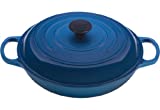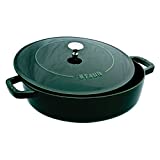Have you been put off by over-the-hill versions of French cheeses? Indeed, a cheese you fell in love with in France doesn’t always travel well to the US. That’s why I often buy American artisinal cheeses that are patterned after my favorite European cheeses. And Red Hawk cheese, from Cowgirl Creamery, is one of my all-time favorites.
My favorite cheeses in the world are the washed-rind cheeses from France and Italy, such as Burgundy’s Epoisses, Alsace’s Munster (which is nothing like a US Muenster!), and Lombardy’s Taleggio. Not to be confused with bloomy-rind cheeses, such as Brie and Camembert, washed-rind cheeses go one step further: As they ripen, their rinds get rubbed or washed with a solution (often of salt and water, though sometimes of a local product such as beer, wine, or brandy). This step brings beefy, bold, and smelly-in-a-good-way effects to the creamy cheeses.
Sadly, unlike a lot of European cheeses, most washed-rind cheeses don’t travel well. By the time they get to my table, they’ve gone from irresistibly beefy and bell-ringingly sharp to downright ammonia-y.
Fortunately, I’ve found a stellar domestic washed-rind cheese that I’d put up against it’s European counterparts: Red Hawk from Cowgirl Creamery in California. Better yet, I’ve found it in peak condition locally.
Unlike most European washed rind cheeses, this one is a triple-cream cheese—so it combines that extra richness you get in, say, a St. André, with the amazingly bold, sharp, and irresistible saltiness of a washed rind cheese. Serve this magnificent cheese simply with crackers and nuts for an appetizer or with ripe fruit and bread for an amazing way to finish off dinner.
Find Red Hawk cheese at your best local cheese shop. I also find it often at Whole Foods.
Other posts you might enjoy:
• The Best Way to Store French Cheeses.
• How to Serve a Cheese Course
Enjoy!
Share


















Cheeses are my weakness. 🙂
I’m so glad someone explained the difference between washed-rind cheeses and cheeses like Brie and Camembert! I knew there was a difference (the latter are much more mild), but I didn’t know why. Thanks for this!